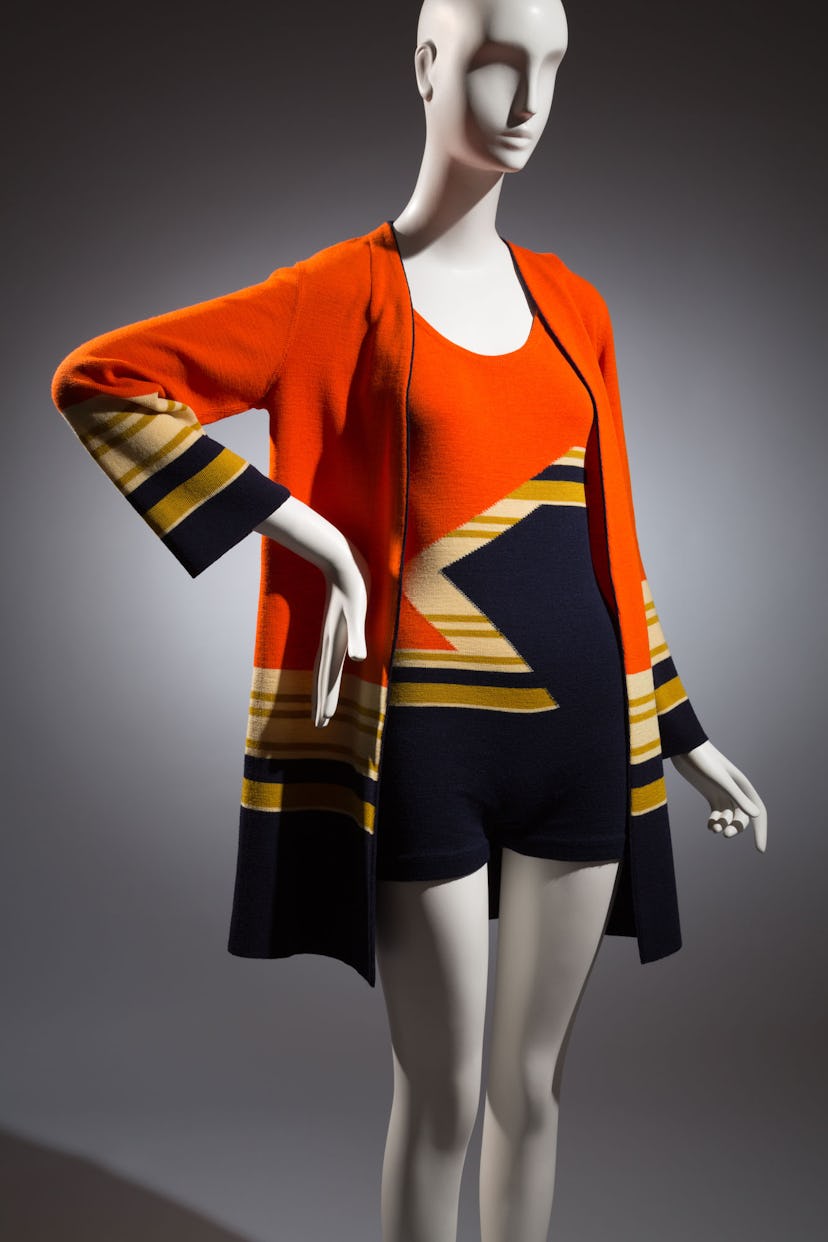Thanks to their gorgeous beading—and to the high-spirited women who wore them—the flapper-happy clothes of the 1920s have long fascinated historically minded fashion lovers. But, as a new exhibit at F.I.T. demonstrates, the decade that followed, the relatively dreary 1930s, was the true highpoint of innovation and creativity. “The rebirth of classicism inspired designers to highlight and enhance the natural line of the body,” says Patricia Mears, the deputy director of the Museum at F.I.T. and co-curator of Elegance in an Age of Crisis: Fashions of the 1930s. “They took advantage of new technologies, like wider looms, which allowed them to cut on the bias, to create a truly modern look. It was a golden age.” The exhibit is a first in that it examines both women’s and men’s clothes, with G. Bruce Boyer curating the latter. Men didn’t wear bias cuts, but tailors did begin to deconstruct jackets, guiding their customers away from the padded Edwardian look to the modern V-shaped silhouette. Still, only about half as much clothing was produced during the ’30s compared to the ’20s; even the rich wore their clothes more, and wore them out. “This isn’t a jazzy show,” Mears says. “There’s an inherent fragility to this time period. The details and nuances are very subtle. But despite the desperation that people were feeling, there was still a desire to be ebullient. People become innovative during periods of deprivation.”
Elegance in an Age of Crisis: The Fashions of the 1930s, The Museum at F.I.T., Seventh Avenue at 27th Street, February 7 – April 19.
1
Vionnet evening gown
“Madeleine Vionnet is really emblematic of the type of designer we’re talking about in this show—a technician who was also an artist. Without her, the 1930s wouldn’t have looked the way they did. The sleeves and torso are cut all in one piece and the skirt is cut in quadrants that allow it to fall gracefully over the body.” — Patricia Mears
Image courtesy of The Museum at FIT
2
Aimee de Hereen suit
“This was made by Knize, the Viennese tailors who dressed the Habsburgs, for a Brazilian socialite named Aimee de Hereen. It’s a walking suit. What’s interesting about it is that it’s culottes rather than a skirt. —P.M.
Image courtesy of The Museum at FIT
3
Augustabernard evening gown
Putting a name to this technically rigorous dress took some detective work: F.I.T.’s, which is most likely a copy of a couture original made by one of the big American department stores, has no label. A chance spotting of the original pale yellow dress in an auction catalogue made identification possible. “This dress is basically one piece of fabric slit down the middle and she took the two ends and tied them around the body in a double helix.” —P.M.
Image courtesy of The Museum at FIT
4
Munchen bathing suit
“This was made early in the decade, before synthetics were popular. But you can see where swimwear is going: more body conscious, more fashion conscious. The refinement of sportswear in this period is really striking. You get better quality activewear, more revealing, much more fitted. It becomes a fashion statement.” —P. M.
Image courtesy of The Museum at FIT
5
Charles James coat
“What’s interesting about this coat is that you can see that he was experimenting. He started out as a milliner and when he started making clothes he wasn’t always successful. This is cut on the bias but he chose a very loosely woven tweed that would have been hard to control.” —P.M.
Image courtesy of The Museum at FIT
6
Blue Knize dinner jacket
“Midnight blue dinner jackets were popularized in the early 1930s by the Duke of Windsor and his brother, the Duke of Kent. The thinking was that a dark blue was richer looking under artificial light than black. But the owner of this jacket went a few shades lighter.” —G. Bruce Boyer
Image courtesy of The Museum at FIT
7
McGregor men’s bathing suit and robe
“This suit is from the early part of the decade. As you go through the ’30s, swimwear becomes skimpier. By the end of the decade, the top would have been gone. The 1930s was when the idea that men should be athletic and muscular rather than portly and dignified originated.” —G.B.B.
Image courtesy of The Museum at FIT
8
Gardner and Wooley green smoking jacket
“The smoking jacket is a holdover from Edwardian times, when men would put them on after the ladies retired after dinner. In the 1930s, they were worn when you entertained at home. If you went out, you wore a dinner jacket. But if you had guests at home, you would wear a smoking jacket. They came in different colors: dark yellow, dark blue, maroon, red.” —G.B.B.
Image courtesy of The Museum at FIT
9
Anderson and Sheppard suit
“Anderson and Sheppard are probably the most successful, best known tailors on Savile Row. This suit is a walking or golf suit—you can use the terms interchangeably. It was made by Peter Sheppard, the son of the founder of the firm, for himself.” — G.B.B.
Image courtesy of The Museum at FIT
